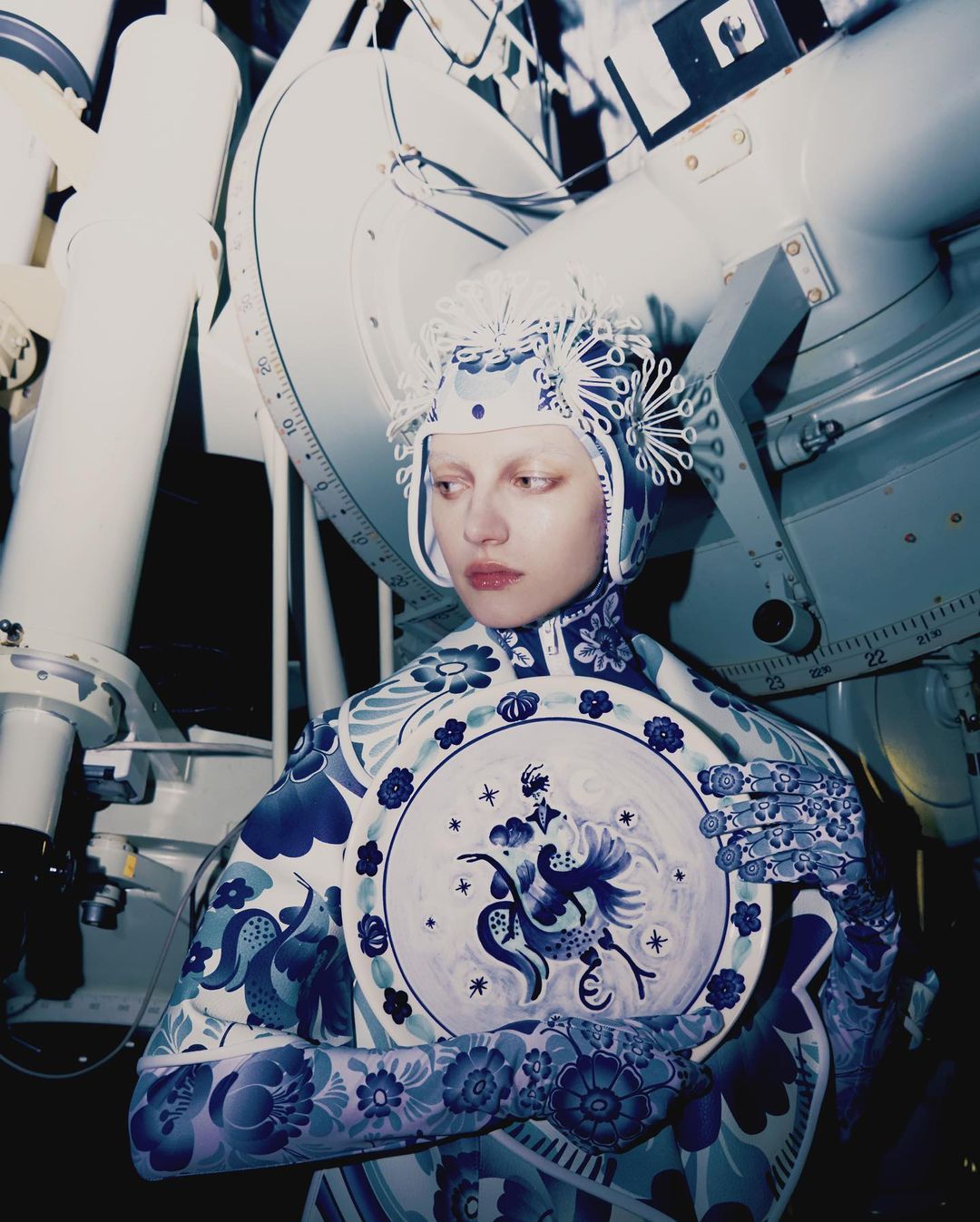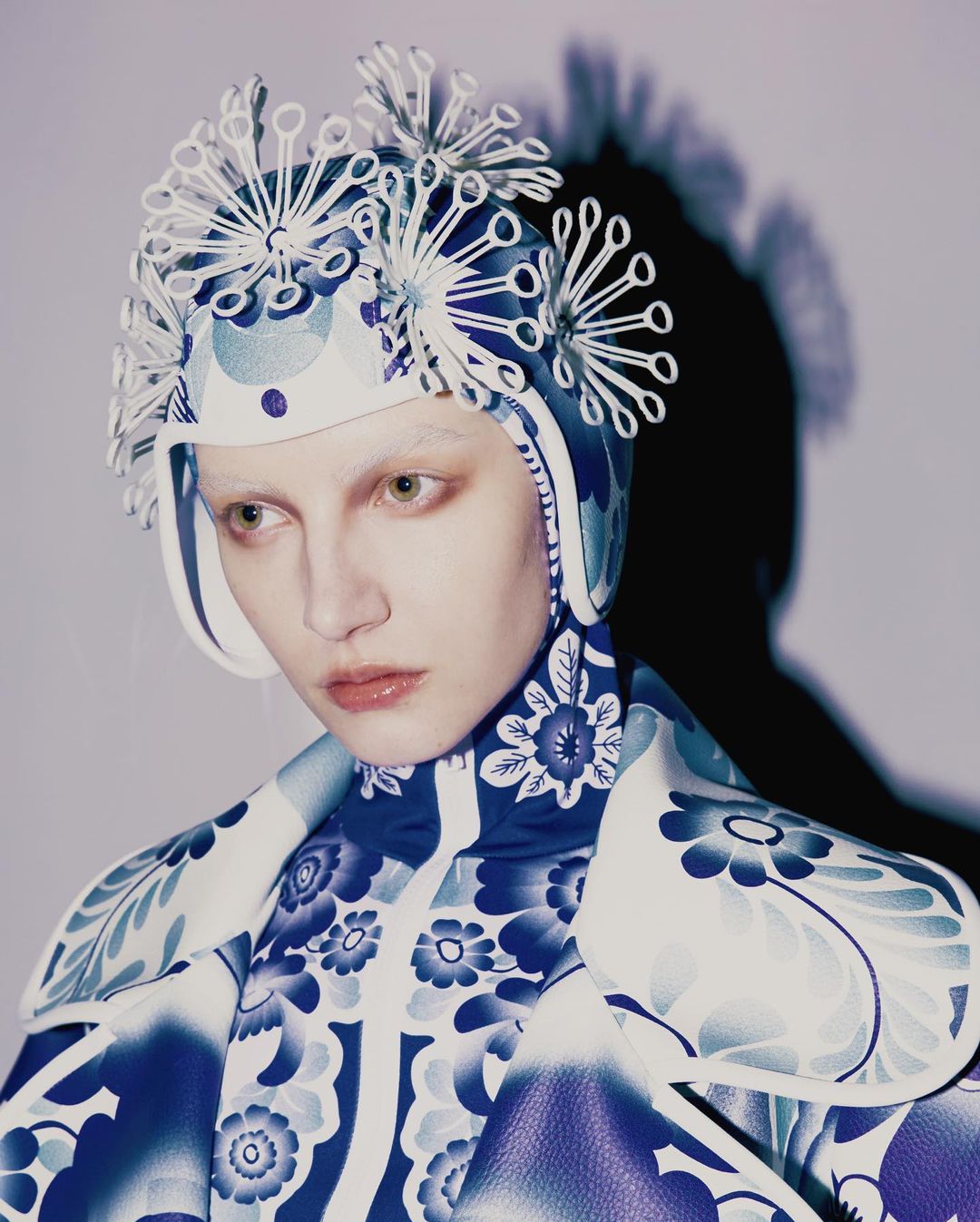In the stories of Slavic mythology and Polish folklore, the connection between outer space and magic is often mentioned, but the astronomer Copernicus, who developed the heliocentric worldview, was also born in the region, not to mention the only Polish astronaut, Mirosław Hermaszewski, who is highly respected in his home country—thus, a stylish solution was born for the theme of the collaboration between Instytut B61 and Rad Duet. The project “Kowalski in Space” was prepared as part of the exhibition “Kujawy-Pomerania, Understanding the Universe” for the Dubai World Expo.
Although the Dubai Expo 2020 is coming to an end, for the time being, it holds even better projects, drawing attention to the specificities of different nations around the world and common thinking. The Expo is the world’s third-largest economic and cultural event after the Olympic Games and the World Cup, an exciting and futuristic happening with a wide range of programs, new technological developments, mouth-watering gastronomic innovations, concerts, exhibitions and workshops. Most countries have their own pavilion, where the concept reflects the characteristics and current issues of a given nation. This is also the case in Poland, where the space for temporary exhibitions is dedicated to presentations by Polish regions and institutions, which vary from week to week and show the diversity of the country’s natural environment, culture, tourist attractions and scientific life. Here we can find the Polish characteristics that we immediately associate with the country: natural treasures, innovations, caramel, Polish cinema, dynamically developing and recognized Polish design, or unusual fusions—the latter represented the country from a very special point of view, as between 3 and 9 February in the Polish pavilion, the collaboration of the Instytut B61 and Rad Duet, the project “Kowalski in Space” was presented at the exhibition “Understanding Universe” in Kuyavian-Pomeranian Voivodeship.
Instytut B61 is an art&science group and fictional research institute where science and art activities, mainly in astronomy, take place in the form of immersive, site-specific performances on the border of theater, multimedia, performances, concerts and installation art. The scientific world is not far from the design team of Rad Duet, as the brand was inspired by the world-famous Polish physicist Maria Skłodowska-Curie, among others. The designers of Rad Duet, Maciej and Juliusz, work on themes that unite Poles and nurture their national characteristics, strengthening their sense of cultural identity while constantly responding to current situations. Their main features are their visual elements evoking faiences, which represent and reinterpret the unique details of ceramics.





The results of the collaboration are the iconic and traditional astronaut costumes reviving the Polish heritage. The first is an ordinary costume for extraterrestrial colonies, covered with traditional patterns of Włocławek faience and processed according to the cosmic theories of the professors of the Instytut B61. The helmet, which complements the collection, is decorated with 3D-printed flowers that act as photosynthetic solar panels. The other part of the design is a space suit inspired by the crystals of the Irena steelworks in Inowrocław, which is used for spacewalks. Of course, this can also be attributed to an important Polish heritage, namely the technique of producing single crystals developed by the Polish chemist Jan Czochralski in 1916, which is the oldest and one of the most widely used methods in the world.


The collection is housed in the Polish pavilion at the Dubai Expo, which floats around an installation representing a cosmic environment. The designers of the installation were the blacksmiths of an authentic Polish workshop—so this can also be traced back to Slavic mythological stories in which blacksmiths were considered the first alchemists, the epitome of the secret science and magic of the Middle Ages. In addition, there are a number of small hints that pay homage to old stories. The project was made as part of the exhibition of the Marshal’s Office of the Kujawsko-Pomorskie Voivodeship, which will present the Kujawy-Pomerania region at the World Expo.

In addition to the design, the special atmosphere of the collection is reflected in the photos: the project is complemented by a series of photos by Weronika Walijewska, for which the site was provided by the largest RT4 Copernicus radio telescope in Central Europe at the Astronomical Center of the Nicolaus Copernicus University in Piwnice.


Photos: Weronika Walijewska
Models: Masia, Marcy / GAGAMODELS
Hair and makeup: Joanna Huczko
Rad Duet | Web | Facebook | Instagram
Instytut B61 | Web | Facebook
Source: Vogue Polska

Favorite interiors of the week_Ukrainian edition

Essence of Hungary | A walk in the park of history: public gardens in Budapest










